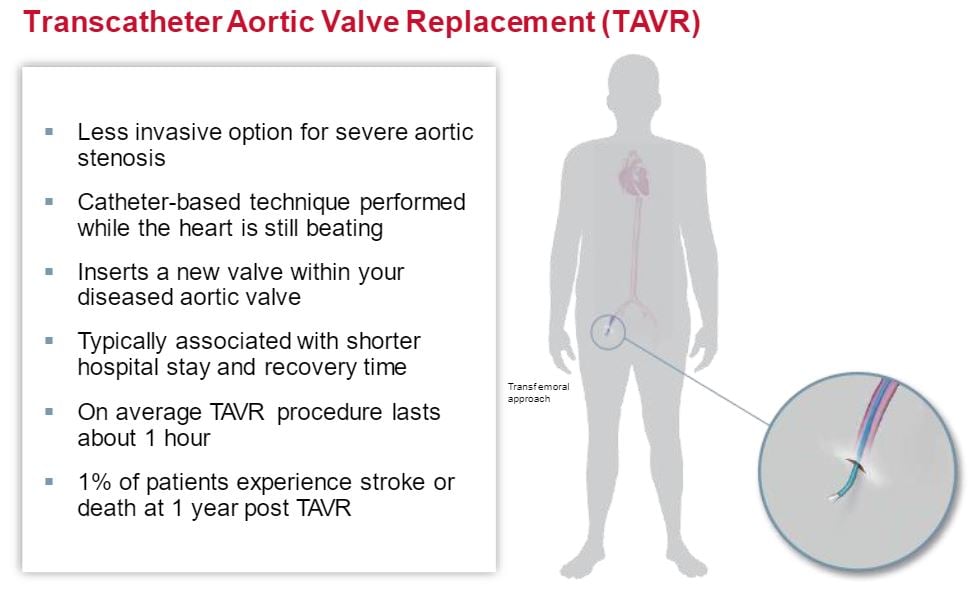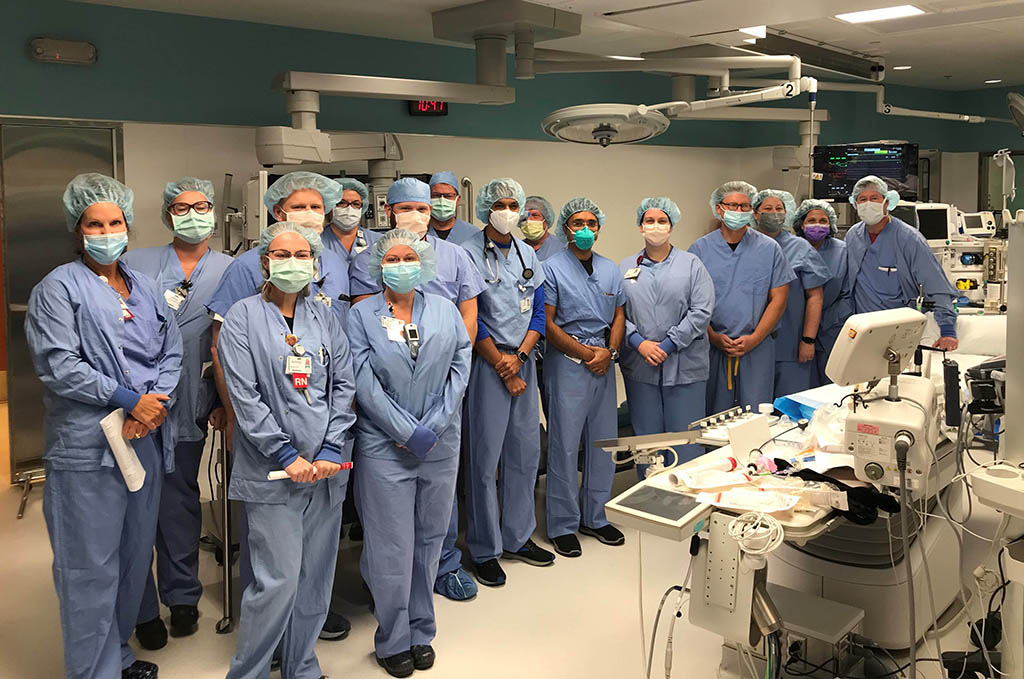Transcatheter aortic valve replacement (TAVR) is a procedure that replaces a diseased aortic valve with a man-made valve through a less-invasive procedure than traditional open-heart surgery. TAVR is used to treat a condition called aortic stenosis, which means the heart may have to work too hard to pump blood through the small valve opening to the rest of your body. This may lead to increasing heart failure.
During TAVR, the surgeon inserts a catheter through a blood vessel in your leg to deliver and implant the artificial valve into your heart.
What are the benefits of TAVR?

Who might need TAVR procedure?
You may need replacement of your aortic valve if you have progressive heart failure due to aortic valve stenosis. Factors making TAVR more likely to be recommended than an open heart procedure would include:
- Older age
- Frailty
- Weaker heart
- Previous heart surgery
- History of stroke
- Chronic obstructive lung disease (COPD)
- Liver disease
- Kidney disease
- Diabetes
- Previous radiation treatment to your chest
- Large calcium deposits in the blood vessel that carries blood away from your heart (ascending aorta), called porcelain aorta
For more information, consult your family physician or cardiologist.

The TAVR team at CRH.